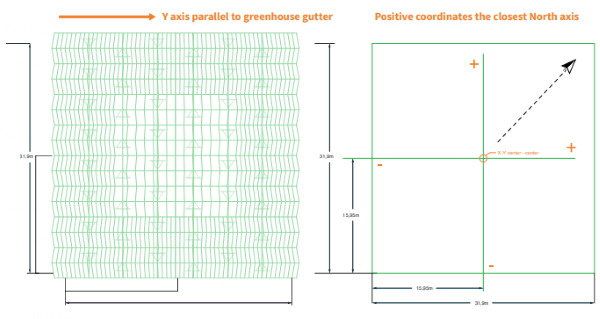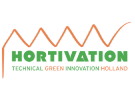The Hortivation Foundation is introducing the Hortivation Point as the global positioning standard for greenhouses. This responds to the demand by greenhouse builders, installers and other suppliers for a standardised methodology for determining the exact position of every object in a greenhouse. This methodology has been included in ISSO publication 88, which describes the quality criteria for the construction of greenhouses.
It is important for parties constructing and fitting up greenhouses to be able to determine the exact location of all of the elements in a greenhouse. This importance increases as the number of automated systems that must autonomously or synchronously operate in the greenhouse increases, such as internal transport systems, and spraying, harvesting and scouting equipment. The real-time measurement of GPS coordinates in greenhouses is not always reliable and the positioning methodologies currently in use yield divergent results. This hampers the automation and synchronisation of processes and data flows. The Hortivation Point changes all this.

Central reference point
At the request of the greenhouse technology sector, the Hortivation Foundation in cooperation with the Dutch Organization for Applied Scientific Research (TNO) knowledge institute has developed a methodology that is to become the global standard. This is based on a local, three-dimensional system of coordinates for the greenhouse or a section, whose centre point (Hortivation Point) functions as the central reference point. The relative position of the objects or locations in relation to this reference point can then be determined fairly easily and clearly. It does not matter whether the section is square, rectangular or asymmetric.
Director Annie van de Riet of the Hortivation Foundation and president of greenhouse technology association AVAG is enthusiastic: ‘This methodology significantly simplifies communications within the chain, thus enabling cultivation systems and system components to function better. In this sense the Hortivation Point can be considered a real breakthrough and milestone.’
Global standard
The new standard is described in detail in the document ‘Standaardisatie plaatsbepaling in de kas’ [Standardised Positioning in Greenhouses], which was added to ISSO publication 88 as an amendment in May 2020. This standard is used by the greenhouse technology sector throughout the world, which gives the standard global reach. The ideal would be for the builder to establish the Hortivation Point for a greenhouse or section early in the design phase and that all involved parties apply the methodology.
Improved coordination, fewer errors
Stakeholders recognise the value of the new standard. ‘Combining multiple data sources is fast gaining in importance,’ says General Manager Andreas Hofland of HortiKey. ‘We use the Plantalyzer to gather divergent data about the plant. By combining this data, we transform it into valuable information for controlling growth. Hortivation Point allows for improved coordination and that elevates controlled growth to a higher level.’
Hans ’t Hart of TNO: ‘Increasingly more and more complex technical systems are installed in modern greenhouses. To prevent errors it is important for all suppliers to make use of the Hortivation Point methodology. We are definitely going to incorporate it in relevant design models, such as CASTA and SIOM.’
For more information: Hortivation
Hortivation
www.hortivation.nl
